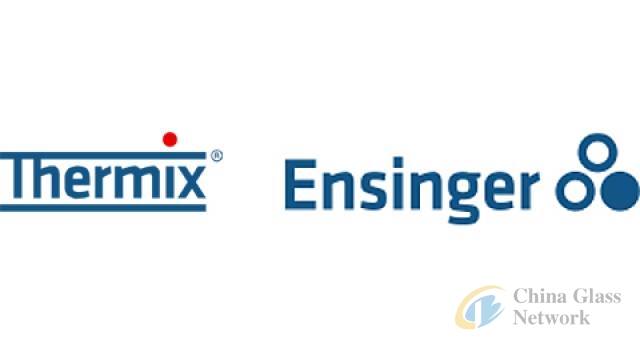Post Time:Sep 21,2018Classify:Company NewsView:1129
In the last 50 years, the average UW value of windows in Germany has
improved by around 75 percent - from 4.7 W/(m2K) or worse to 1.1 W/(m2K)
or better. Highly insulating spacers such as Thermix from the plastics
specialist Ensinger have contributed to the sustainable increase in
energy efficiency and living comfort achieved by modern insulating
glazing.
A material mix of plastic co-extruded with metal gave
the new thermally optimised insulating glass spacer its name: Thermix.
The company of the same name was founded by Georg Greubel, a resourceful
glass expert from Altshausen near Ravensburg, in 1993. And as early as
1994, series production was commenced by its development partner
Ensinger, who ultimately completely acquired Thermix in 1997. The
plastics specialist was already known in the sector for the insulbar
insulating profiles for the thermal separation of metal frames of
windows, doors and façades, which it had launched in 1977.
One
thing was clear: The demands of customers and legislators in relation to
the thermal insulation of buildings would increase further along with
the energy prices. Since the end of the 1970s, hardly any single-glazed
windows, double casement windows or coupled windows have been produced
in Germany. Insulating glass has dominated. In addition, its thermal
advantages have improved thanks to coatings and inert gas in the space
between the panes. One weak point persisted into the 1990s, however,
namely the thermal bridge in the edge bond of the insulating glass.
Warm Edge instead of thermal bridge
"The
spacers at the edge of the pane influence the insulating effect of
windows and façades over the service life which spans several decades",
explains Ingrid Meyer-Quel, who until 2011 was the Product Manager and
Head of Sales for Thermix and today is a freelance consultant for the
Warm Edge and glass. "If the spacer is made from steel or aluminium,
then the high thermal conduction capacity of the metal means that lots
of energy is lost in the edge zone of the glazing. Highly insulating
plastic profiles, usually equipped with a thin diffusion barrier made
from stainless steel, minimise this thermal bridge effectively."
The
architects from the growing passive house movement quickly recognised
the benefits of Thermix. Lower energy losses meant a lower heating and
cooling requirement, lower energy costs and lower CO2 emissions. Living
comfort also increased. Since the glass edge remained warm when the
outside temperatures were cool, barely any moisture from the room air
could become deposited at the edge of the glazing. As a result, the risk
of condensation and mould formation decreased.
"Switch as easy as possible"
"We
have designed the product to make switching to it as easy as possible
for insulating glass manufacturers", explains Heinz Raunest, who in his
capacity as an application engineer at Ensinger has been involved with
Thermix since the very first metre was produced. "The profile rod was
capable of being processed on existing lines without major investment or
training of the employees. The material was highly compatible with all
customary sealants, and we also supplied suitable connecting elements
and muntin bars in numerous dimensions and colours."
But Thermix
was somewhat ahead of its time. In the 1990s, the standardised energy
assessment of windows and façades did not even take account of the
thermal bridge in the transition zone from glass to frame. Consequently,
it was difficult to convey to many customers the value added offered by
a Warm Edge. The insulating glass manufacturers hesitated, despite the
fact that from 1994 onwards it was already becoming apparent in the
draft DIN EN ISO 10077 (then 30077) that a comprehensive new assessment
was in the offing.
Standardisation of the new market
"We
first had to pave our way into the mass market with some basic
groundwork", recalls Ingrid Meyer-Quel, who has been one of the founding
members of the "Warm Edge Working Group" at the Federal Flat Glass
Association (BF) since 1998. Together with research institutes, criteria
were defined for the thermally improved edge bond, and frame models and
calculation processes were developed. The BF data sheets with typical
Psi values for windows and for façade profiles are now regarded as a
reference source far beyond German borders.
In November 2000, DIN
EN ISO 10077 came into force. The Psi value as a linear thermal
transmission coefficient for the thermal bridge at the glass edge was
now incorporated alongside the area-weighted values of glazing (Ug) and
frame (Uf) into the calculation of the U value of windows (UW).
Thermally improved spacers got a significant boost as a result, which
was further amplified as legislation imposed ever greater requirements
on heat insulation.
No end in sight
Today, the market
offers a number of versions of the Warm Edge spacer: rod profiles made
from stainless steel that can be processed into frames and hybrid
profiles made from plastic and stainless steel or composite film, as
well as flexible systems which are applied from the drum (thermoplastic
spacers, TPS) or from the roll (foamed profiles) to the panes. Two
thirds of all windows produced in Germany today have thermally optimised
spacers - but why not all of them by now?
"Energy-efficient
construction is a complex topic where visionaries constitute the upper
defining limit and regulators the lower defining limit of the market",
says Heinz Raunest, who supports Thermix customers across the globe.
"But it is quite simply like this: A spacer that insulates well, when
used instead of aluminium, improves the U value of a window by 0.1 to
0.2 W/m2K - with a UW of 1.0 W/m2K this corresponds to ten percent.
Regardless of whether a room is being heated or cooled, there is barely a
component that pays off more quickly. This goes for the wallet, living
comfort and the environment."

Source: glassonline.comAuthor: Shangyi